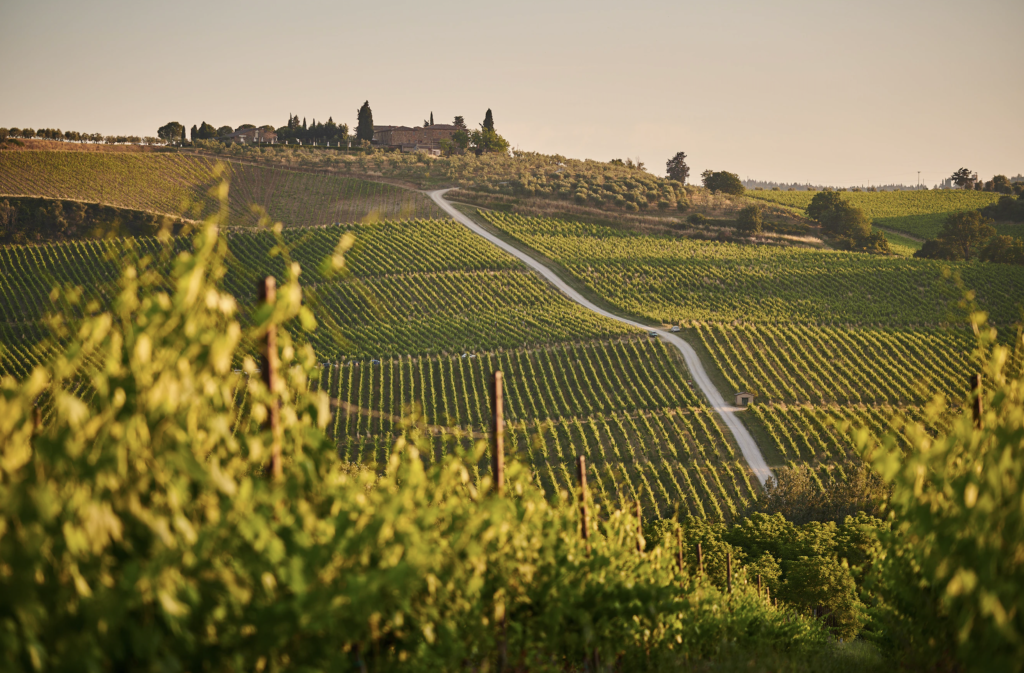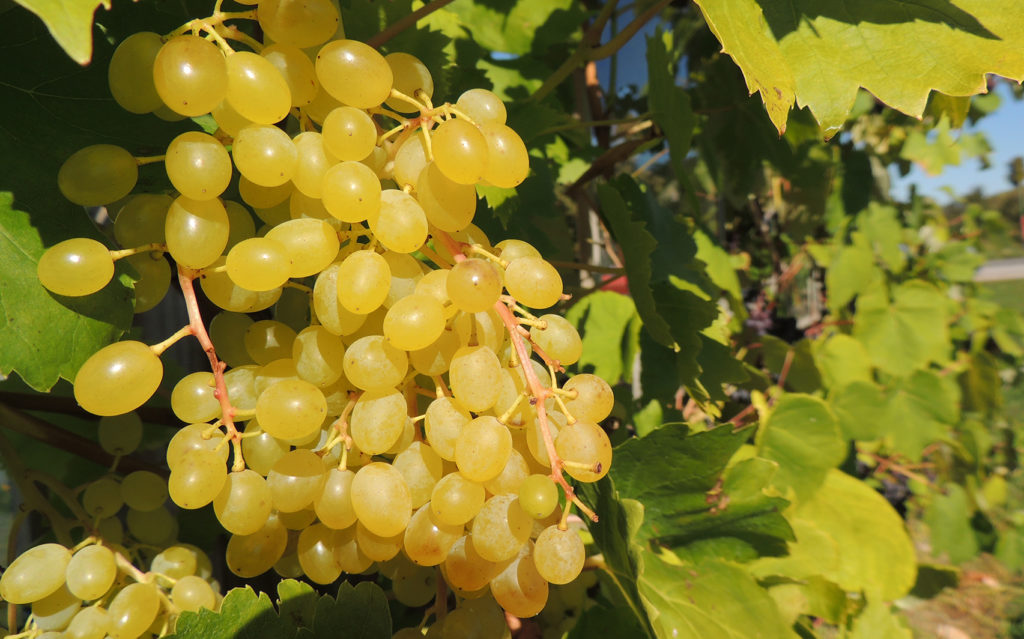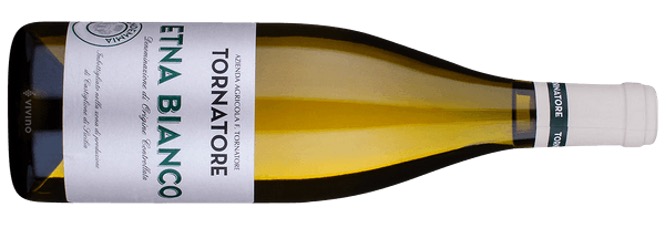Italian White Wines

By Lisa Perrine Brown, Oryana Wine & Beer Coordinator
My first introduction to Italian wines was in my 20s at a restaurant in Little Italy in South Philly with my family. It was a very typical Americana Italian décor with red and white checkered table cloths. The only wine I could remember the restaurant having was a very dry Pinot Grigio, a Chianti, and sangria with lots of fruit in it. I had a very young palate back then so sweet sangria was my choice. But now I know that Italy holds so many more amazing choices that are sometimes overlooked.
Why don’t we know more about Italian wines? Ten years ago the life of a bottle of Italian wine was sometimes only 2 to 3 years. It was probably handmade using ancient methods and was consumed fairly quickly. Today, many wineries all over Italy are utilizing technology and much more sophisticated wine making methods that elongate a wine’s life to sometimes 10 years. This has made it possible to export it so we can enjoy it in our homes without traveling to Italy.

So, let’s look at some Italian wines that you can enjoy in your own cucina (kitchen) or porch.
Italy boasts many geographically different wine growing areas. Italy is a long peninsula that starts in the Alps and stretches down to Northern Africa, and is host to many different types of climates and terrains. It’s surrounded by the Adriatic Sea, Tyrrhenian Sea, and other water bodies. The Alps cut across the top of the country and the Apennines mountains stretch the entire peninsula. Some of the other fruits that grow in Italy are olives, almonds, and figs.
“When the ancient Greeks came to southern Italy, bringing their grapevines and sophisticated viticulture practices along with them, they met the native Etruscans who had already developed their own winegrowing techniques. Later, Roman tribes of central Italy arrived, inheriting this composite wine culture, and expanding their empire – and their wine savvy – throughout the entire peninsula and most of Europe. Then, with the rise of Christianity, wine production was carried forward in monasteries. Eventually individual city states emerged and developed distinctive winegrowing traditions which continued after the Reunification of Italy in 1861.” From winefolly.com
Italy has a great many native grape varieties and types of wine and more distinctive winemaking practices worldwide because the Greeks brought their grapevines and sophisticated viticulture practices to southern Italy. The native Etruscans already developed their own wine growing techniques, and later, the native Roman tribes of Central Italy expanded upon what the Etruscans and Romans were doing. Then, with the rise of Christianity, the wine production was carried forward in monasteries. Subsequently, individual city states emerged and developed their own unique winemaking traditions.

Fruliano
Fruliano is mostly grown in the region of Fruili-Venezia Giulia, in the northeastern corner of Italy. The region’s Collio zone lies along the Slavonia border between the Alps and the Adriatic Sea. The alps protect the area from harsh northern winds, and the nearby sea has a moderating Mediterranean influence.
Tasting notes: You’ll find appealing aromas of jasmine and narcissus, dried figs, orange zest, and green apples. Plus, hints of wet stone and salty sea. Silky palate with delicate flavors and scents, followed by a slightly bitter almond finish.
Food pairings: Prosciutto, roasted cod or halibut, mac & cheese.
Soave
Soave wines fell off the map after the fall of the Roman Empire but since then are finding their way back. A new system of subzones called Menzione Geografica Aggiuntiva have been created to highlight their diversity and potential. “Italy’s denominazione di origine controllata (DOC) system, introduced in 1963, is based on the French model, but goes one step further: It specifies not only the production area and methods for each wine, but it guarantees the quality standard of certain wines which pass a government taste test.” From masterclass.com
Tasting Notes: “Charming, confident, and elegant (typically used of a man)” is how the Oxford English dictionary defines ‘suave’. This provides a pretty good description of soave too. There is something ‘masculine’ about Soave. It’s rugged, yet refined, with notes of chamomile, green apple, baked pear, stone and minerals, nutmeg, and thyme.
Origins: Veneto, east of the Valpolicella winegrowing area. The Soave growing areas has three basic sub-divisions:
Classico: the original hilly area at the center
Soave DOC: the expanded area created in the 1970s when the wine began to see popularity
Colli Scaglieri: consisting of hillside areas outside the classic zone
Food Pairings: Veal scaloppini, fettucine Alfredo, Dover Sole, roast chicken
Try: Pieropan 2018, Soave Classico

Tasting Notes: A fresh and expressive Soave, with classic white flower and almond blossom perfumes with a clean, waxy character on the palate and citrus lift. Blend: 85% Garganega and 15% Trebbiano di Soave
Rating: 93 James Suckling, 92 Wine Enthusiast, 91 Wine & Spirits, 91 Wine Spectator
Timorasso
Timorasso grapes were planted throughout the Asti and Alessandria provinces of Piemonte but phylloxera (a wine pest) nearly wiped out Timorasso beyond the hills of Tortona. It was nearly extinct until a group of wine makers led by Walter Massa swooped in to encourage its growth. While Timorasso has brought attention to this little-known area, it has yet to get its own individual appellation. In absence of this, many producers choose to display the word Derthona (the traditional name for Tortona) on their labels.
Tasting Notes: With aromas of bruised apple, acacia honey, mineral, dried herbs, and lemon confit, Timorasso is an anomaly. It’s multi-layered, structured, intense, tannic, and has the capacity to develop for a long time. That these qualities don’t appear to come from winemaking practices makes it even more unusual. Instead, they appear to be inherent characteristics of the grape itself.
Origins: Southeastern Piemonte, in the province of Alessandria. Specifically, the undulating hills surrounding the town of Tortona. It’s sandy, chalky soils are ideal habitat for the Timorasso grape.
Food Pairings: Veal chop with wild mushrooms, grilled pheasant breast, meat-filed ravioli with butter and sage.
Verdicchio
A derivative of the word verde that means green both the grape and the wine have a greenish hue.
Tasting notes: With lime zest, kiwi, fresh grass, green papaya, and coriander. Based on the quality level Verdicchio has many variations. The basic well-made DOC (Denomination of Controlled Origin) version balances high acidity with crisp apple and hints of fresh blossom.
Origin: Marche, on the calf of Italy’s boot. This area is called the Castelli di Jesi Verdicchio. It stretches from the Adriatic coast to the foothills of the central Apennine mountains. This area experiences big shifts between day and night temperatures due the continental climates and the Mediterranean weather patterns.
Food Pairings: Asian food, hot & spicy food, pulled pork, fried anything.
Greco di Tufo
This sounds like a Greek grape but it’s Italian so it likely it got its name because it’s sweet like some Greek wines.
Tasting Notes: White Blossom, dried apricot, and turned earth aromas. Crisp, bone dry, even astringent at first sip. But mellows into tart green apple with a palate-coating creaminess and dry, slightly tannic finish. It can also display notes of leather, green apple, hibiscus, honey, and even toasted nuts, meant to be drunk young.
Origins: This ancient variety grows throughout Campania, but its home turf is in the ancient area known as Irpinia around the town of Tufo. The Italian name of porous rocks of compressed volcanic ash is tufo.
Food Pairings: Buffalo mozzarella and tomatoes, grilled fish with lemon and olive oil, fried calamari.
Etna Bianco
Revered by the ancient Greeks as a winegrowing area but fell into decline. Yet over the past decade, winemakers have a renewed enthusiasm for this native grape, terroir, and growing conditions.
Tasting Notes: Can a wine be intense and understated simultaneously, lighter body and complex? Yes! Pronounced mineral and smoke with a hint of jasmine. Racy acidity and notes of mandarin orange, prickly pear, and bitter melon, along with a moderately long finish with a soft ashy ending.
Origins: Enta is the tallest volcano is Europe. Enta’s volcanic soil is a mix of complexity and age. Warm Mediterranean breezes soften hot southern temperatures.
Food Pairings: Tuna carpaccio, grilled chicken with herbs, caponata, cured olives, and hard cheeses.

Try: Tornatore, Etna Bianco has a striking straw-yellow color with reflections of green. Intensely aromatic and focused on the palate, this wine has fruit notes of grapefruit, white peach, melon, and tangerine that are framed by hints of fresh-cut green herbs, oyster shell, and slate. This is a wine of great depth and complexity that finishes with refreshing salinity and zesty acidity. Blend: 100% Carricante
Ratings: 92 Wine Enthusiast, 91 James Suckling, 90 Wine Spectator
Lugana

Try: Lugana, Limne, Tenuta Roveglia
Tasting Notes: A bright, deep straw yellow in color. Good body, delicate fragrance yet complex. Fermentation in stainless steel vats.
Review: “Fragrant aromas of peach blossom, field flower and ripe white-stone fruit are front and center on the nose. The creamy, savory palate doles out ripe peach, yellow pear and lemon drop alongside bright acidity that gives it a tangy, mouthwatering close.” ~Kerin O’Keefe
Rating: 91 points Wine Enthusiast
Food Pairings: Fish, white meats and hors d’oeuvres. Excellent Aperitif.
Origin: The Lugana zone to the south of Lake Garda

Alta Luna, Savignon Blanc, Dolomite Alps
100% Sauvignon Blanc. This wine’s palate offers flavors of lime, green apple, passion fruit, and white peach. Excellent as an aperitif, ideal with vegetable dishes or fresh fish. Produced in Northern Italy’s Trentino region with grapes sourced from select hillside vineyard sites, Alta Luna offers expressive wines from the region’s native varietals.
Pinot Grigio

Torresella
Torresella Pinot Grigio is dry with bright citrus and apple flavors, framed by a crisp acidity that leads to a clean, smooth finish. On the nose there is a finesse aroma of white-fleshed stone fruits, green apples, and white flowers that persists on both the nose and palate. Its popularity is driven by its flexible taste profile, including medium body and fresh unoaked fruit flavors.

Scarpetta
Scarpetta Pinot Grigio showcases some of the best sites in Friuli-Venezia Giulia for this aromatic varietal — starting with the light, gravelly soils of the Grave region. This gives it a crisp, clean minerality. Additionally, 30% of the Pinot Grigio is planted on “Ponca” soil in the Colli Orientali on steep hillsides. The combination of the Grave and Colli Orientali yields a wine which has body, bright acidity, and great minerality. Denomination: Pinot Grigio DOC Friuli 2019
Vinification: The grapes are fermented in stainless steel after being de-stemmed and left on skins for approximately 12 hours, resulting in a wine with clear and bright aromas and flavors.
Aging: Six months on its lees in stainless steel.
Food Pairing: Wonderful on its own or with grilled fish

Ruffino Pinot Grigio
Notes of meadow flowers, pears, and golden apple. The bouquet is fresh and complex, showing refined notes of sage and mint accompanied by an elegant minerality. Medium bodied, lively and elegant, with notes of lemon peel.
Denomination: Delle Venezie IGT, Veneto and Friuli Giula
Vinification: The grapes were destemmed, crushed, lightly pressed. Fermentation took place at 60°F in stainless steel for 10 days.
Prosecco

Col di Luna ‘FLORA’ Prosecco Doc
A truly dry Prosecco made by a family-owned winery in Treviso. Lovely notes of granny smith apples and garden flowers with a crisp, lingering finish. Entirely hand harvested Glera grapes, fermented with native yeasts and bottled with low sulphites. The vineyards are in the process of converting to organic and are currently farmed without herbicides or fungicides. Col di Luna works with farmers and producers who are committed to organic viticulture, low-intervention, and terroir-driven wines.
- Made by farmers (not tank-farms)
- Certified organic or practicing organic wineries in conversion
- Native grapes
- Native yeasts
- Low sulphur (45 mg/l or less of added SO2)
- Unfiltered or slightly filtered
- Dry farmed
Wine Notes: Most Prosecco is usually made and labeled ‘Extra-Dry,’ which stands for a sugar level between 12-17 gr/l, resulting in sweet bubbles. If the wine is made ‘Brut,’ as Flora is, you get a dry wine (less than 2gr/l) with notes of green apple, Asian pear, and fresh cut flowers. Pairs well with all kinds of dishes, from aperitivo foods and light meals, to crudo and sushi.

Ruffino Prosecco
The bouquet is fragrant and bursting with fruit notes. It shows clean aromas of apples, pears and citrus, accompanied by hints of wisteria. Crisp, clean, and delicate with fine bubbles on the palate. Intense flavors of apples and peaches lead to a pleasant finish with lingering fruit and floral notes.
Food Pairing: Enjoy Ruffino Prosecco on its own or mix it into a favorite cocktail. It’s also delicious served with pizza, fish, shellfish, or white meat dishes.